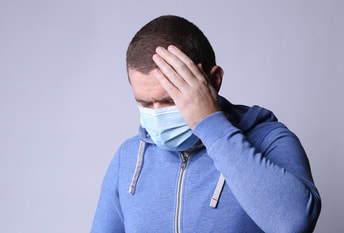 Headaches are among the most common disorders of the nervous system, according to the World Health Organization (WHO). It is estimated that half to three quarters of adults aged 18–65 years in the world have had a headache in the last year. Among these individuals, 30 percent or more have reported suffering from a migraine. And 1.7 to 4 percent of the world’s adult population has a headache for 15 days or more. Headaches are disabling and can significantly influence the quality of life, especially for those suffering from chronic headache disorders. Repeated headaches affect family and personal life, affect employment and come at a great financial cost. Research shows that complementary therapies such as acupuncture, massage, yoga, biofeedback, and meditation show promising results for migraines and tension headaches. Other alternative techniques like spinal manipulation, chiropractic care, some supplements and botanicals, diet alteration, and hydrotherapy are also beneficial for migraines. However, the evidence for cluster headaches is limited. Did You Know Acupuncture Can Help You With Headaches? Findings from selected systematic reviews and meta-analysis summarize that acupuncture is helpful in relieving migraine, tension headaches and other types of chronic headaches and can play an important role in the treatment plan for these types of headache disorders. A Cochrane review of 22 randomized trials compared the effects of acupuncture with sham acupuncture, usual care and drug treatment specifically on migraines. Compared to usual frequency, acupuncture improved headache frequency with 41 percent of those treated with acupuncture experiencing at least 50 percent reduction in headache frequency. Acupuncture consistently reduced headache frequency compared to sham acupuncture. After three months headache frequency at least halved in 57 percent of participants receiving acupuncture compared to 46 percent in those taking prophylactic drugs and after six months in 59 percent and 54 percent, respectively. The authors of the review concluded, “If people have six days with migraine per month on average before starting treatment, this would be reduced to five days in people receiving only usual care, to four days in those receiving fake acupuncture or a prophylactic drug, and to three and a half days in those receiving true acupuncture.” Quality of life is greatly affected by frequent headaches and a systematic review in 2018 found that acupuncture enhanced quality of life more than medication did as it exhibits greater efficacy both in treatment and prevention of migraines compared to no treatment, sham acupuncture and medication. Other studies that have assessed the effectiveness of acupuncture when given in addition to usual care, have found acupuncture to have clinically relevant benefits for people with headaches. In one such study, patients suffering from chronic headaches who had acupuncture experienced 34 percent fewer headache days. They used 15 percent less medication, had 15 percent fewer days off work and 25 percent fewer GP visits after one year. How Acupuncture Helps Ease Headaches Various biological processes take place in the body during acupuncture. These mechanisms—the neural pathways from acupuncture point stimulation to the spinal cord and the deactivation of the pain centers in the brain—have been studied and mapped over time. A 2011 study introduces the concept of neural acupuncture unit (NAU), which is a collection of neural and neuroactive components in the body that are activated when acupuncture needles are inserted and stimulated at designated points in the body. Also known as acupoints, these designated areas represent a “landmark system” which indicates sites of relatively dense and concentrated neural and neuroactive components. Here acupuncture stimulation can elicit a more efficient therapeutic response. Acupuncture acts through multiple pathways to produce analgesic effects and reduce central sensitization. It triggers a sequence of events that include the release of chemicals, including neurotransmitters and the body’s own opioids, within the central nervous system, which produces the analgesic effect of acupuncture. A 2018 study investigating the neurochemical responses after an acupuncture treatment for migraines found biochemical changes of brain metabolites that may be responsible for the reduction of headache intensity. Acupuncture views headaches differently from Western medicine. A migraine, according to Western medicine, is a recurrent headache with no known cause and is commonly triggered by stress, fatigue, insomnia, menstruation and weather changes. From a Traditional Chinese Medicine (TCM) perspective, a headache is a subjective symptom that can accompany many other signs and symptoms related to each other. According to acupuncture, a headache can be caused by problems in other parts of the body and not necessarily only in the head or due to neurovascular dysfunction. That is why acupuncturists will diagnose and treat each individual headache accordingly. The pathological changes and conditions inside the body related to each headache is analysed by TCM practitioners to find the underlying causes of a headache before treatment begins. Next Steps If you or someone you know is suffering from pain, maybe acupuncture could help! Give us a call or check out our website to set up your complimentary treatment.  Migraines affect about 10% of people worldwide. Anyone who suffers from migraines can tell you, as far as headaches go, migraines are in a class of their own. In general, migraines tend to be one-sided with severe pain, but what differentiates a migraine from other headaches are the accompanying symptoms that can include visual disturbances, loss of appetite, nausea, vomiting, even temporary paralysis. Western medicine subdivides and categorizes migraines based on symptomatology. Traditional Chinese Medicine (TCM) has its own subdivisions for migraines based on etiology and symptomatology. If you are someone that suffers from migraines, can you relate to any of these categories? 1) External Wind In Chinese Medicine, external wind refers to forces of energy affecting us from the outside of the body and are often related to the invasion of bacteria and viruses when our immune system gets overwhelmed. If you have suffered from migraines triggered by the onset of a cold or flu, then you have experienced a migraine brought on by external wind. Accompanying symptoms can include a stiff neck, body aches, chills, fever, sore throat, congestion, and mild dizziness. 2) Liver Excess This is a big category, as liver pathology expresses itself in various ways. The liver in Chinese medicine is a very important organ for its role in keeping qi (energy) flowing smoothly. Blood follows qi, so while blood stagnation is in another category of its own, one of the root imbalances that can lead to that are issues with liver function. Women are 3 times more likely to experience migraines which is thought to be due to hormone fluctuations. The liver also regulates menstruation, according to TCM, so migraines related to cyclical hormone changes will generally fall under this category too. Migraines related to Liver qi stagnation may come with an expanding/distending feeling and will often be triggered by stress and/or hormonal changes. There is sometimes heat accumulation in the liver as well. Liver fire-type migraines can be identified by red, burning eyes, and occasionally labored breathing. When the excess liver energy rises in the body we call it: Liver yang up and you may be dealing with this if you experience dizziness, a bitter taste in the mouth, and find yourself short-tempered with a flushed face. If you have high blood pressure and/or ear ringing that goes along with your migraine, you may fall into this category as well. Since excess liver energy will often ‘attack’ the digestion, Liver excess-type migraines may also include symptoms like gas, belching and acid reflux. 3) Qi and Blood Deficiency There are many reasons the body can be in a deficient state. Genetic, environmental and lifestyle reasons abound. Simply put though, if your migraines come along with extreme fatigue and exhaustion and possibly a pale complexion, you could fall into this category. 4) Blood Stagnation When we think of blood stagnation in Chinese Medicine, the main symptom we think of is pain. These tend to be the most severe migraines. Pain is sharp, in a fixed location, persistent and steady. There may be associated memory loss and palpitations. These are also common with a history of head injury. 5) Retention of Cold, Damp or Phlegm Some digestive symptoms were mentioned in relation to liver pathology, but someone who presents with an excess of damp or phlegm may have more extreme digestive issues such as nausea, vomiting, and diarrhea. These may be relieved by warmth if the body is also retaining cold energy. Also, while wind-type and ‘liver yang up’ migraines may be accompanied by some dizziness, with a phlegm buildup in the body it would be more pronounced, along with heavier sensations in the head. No matter what type of migraine you deal with, acupuncture can help! Get in for a series of treatments that will rebalance these patterns and help keep you migraine-free. Call us! 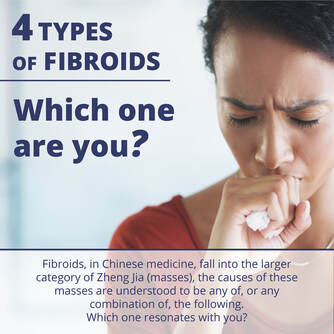 Uterine fibroids are benign growths on the wall of the uterus. They represent the most common gynecological non-cancerous tumors in reproductive females. It is estimated that 80% of women will have uterine fibroids at some point in their reproductive years. Many are symptom free and unaware, but for some women, fibroids can cause heavy bleeding, irregular periods, abdominal bloating and back pain (even though these symptoms are often wrongfully normalized). Fibroids can even grow large and press on vital organs like the bladder or bowel, eventually leading to digestive or kidney problems. The cause is not well understood, however. The theory is that abnormal muscle cells in the uterus are affected by estrogen and other factors in a way that drives tumor growth. Western treatment depends on severity. If asymptomatic, treatment is not needed, if the fibroid/s cause pain or other problems, treatment may involve surgery to remove the fibroids but unfortunately they can return. The rate of recurrence is high, at 30%. Estrogen contributes to the growth of fibroids which makes hormone regulation a main focus of fibroid management. Lupron is a type of hormone therapy that acts on the pituitary gland to stop estrogen production and start early menopause. A hysterectomy to remove the uterus, however, is the only known way to guarantee prevention of recurrence and is obviously not a desirable option for women looking to preserve fertility. So, even with surgery, it is important to deal with underlying causes. Chinese medicine takes a more holistic approach. Fibroids, in Chinese medicine, fall into the larger category of Zheng Jia (masses), as do other growths related to women’s health such as ovarian cysts, endometriosis and reproductive cancers. The causes of these masses are understood to be any of, or any combination of, the following: Liver Qi stagnation The liver is the organ that regulates the movement of qi and stagnant liver qi can reveal itself as typical PMS symptoms: irritability, breast tenderness, and cramps. The liver is also the organ that helps to rid the body of excess estrogen, so it is definitely a worthy focus point from both an Eastern and Western perspective. Blood Stasis Blood follows qi, so long term qi stagnation can result in blood stasis which is considered when symptoms such as more intense cramping and clots are reported. Damp-Phlegm Improper diet and digestion is said to lead to a buildup of damp-phlegm in the body. This accumulation, when condensed by other factors (such as heat, cold or poor blood flow) is thought to set the stage for the growth of various masses in the body. Associated symptoms can include indigestion, bloating, weight gain, and sometimes a watery menstrual flow. Cold Accumulation Exposure to the cold, especially cold that affects the uterus can be another cause of blood stasis which can eventually lead to tumors. Menstrual pain relieved by warmth is a sign of cold in the uterus. Acupuncture and herbs can help eliminate or shrink smaller fibroids, as well as keep them from returning. Acupuncture redirects energy in the body to address patterns like blood stasis, cold, phlegm, and liver qi stagnation to help to restore a yin/yang (and consequently hormone) balance. Chinese herbs are associated with a 72% reduction in bleeding in a study where over half of the participants experienced a reduction in size or a complete disappearance of their fibroids! Another study compared treatment with acupuncture and herbs to treatment with a combination of herbs and steroids. All of the women saw some benefits, but the ones who had acupuncture treatment saw an overall greater reduction in the volume of their fibroids. A 2002 study looked at alternative medical approaches for uterine fibroids. Upon comparing alternative treatments, such as TCM, bodywork and guided imagery against conventional treatment, the researchers found that the patients thrived in the alternative medical group. Fibroids shrank or stopped growing in 59 percent of the alternative treatment group compared to only eight percent of those in the conventional treatment group. If you have any signs of fibroids, seek out a Western diagnosis, but also schedule some acupuncture to make sure you are addressing root imbalances, and so you can feel better fast! 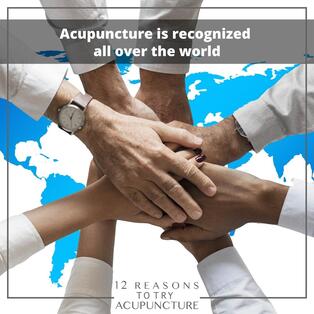 It's estimated that more than 37 million people in the United States suffer from migraines. Migraines are characterized by recurrent headaches with moderate-to-severe pain, usually occurring in a specific area of the head. While most headaches are minor and short-lived, migraines are more debilitating, often forcing the individual to miss work and/or reschedule his or her activities. To make matters worse, however, many doctors and physicians prescribe harsh drugs for migraine sufferers that do more harm than good. A better solution is to first try one of the following drug-free ways to fight your migraines. Nutrition Foods can actually be a trigger for up to half of migraine sufferers. So, keep a journal in which you write down every food you eat, every beverage you drink, and every time you experience a migraine. The goal in doing so is to identify a connection between a specific food and your migraines. Gluten, for instance, may trigger a migraine if you have celiac disease, or perhaps the presence of artificial food coloring is triggering your migraines. Acupuncture Acupuncture has been used to treat headaches and migraines for hundreds of years, and there's no sign of this trend slowing down anytime soon. The American Headache Society has even recommended the use of acupuncture for treating migraines, attesting to its positive effects for this condition. How exactly does acupuncture work? The practice involves the placement of thin needles in specific areas of the body with the goal of stimulating the individual's life force (Qi). The general belief is that stagnant Qi leads to illness, including migraines; therefore, correcting these blockages and restoring the Qi to its normal working order will treat migraines. Vitamin B2 According to one study cited by Prevention, migraine sufferers who took 400 mg of riboflavin (a type of vitamin B2) reported fewer migraines after just 3 months. This water-soluble vitamin also plays a key role in maintaining energy levels and fighting fatigue. Improve Indoor Air Quality Low-quality indoor air has been linked to an increased prevalence of migraines. Not long ago, the Environmental Protection Agency (EPA) announced indoor air pollution as being one of the top five environmental hazards. You can improve the air quality in your home or workplace, however, by cleaning the ductwork, changing the air filter on a regular basis, opening the windows, and adding plants. Give me a call today for more information on how acupuncture can better your health 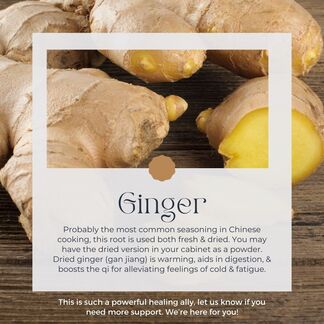 Did you know that there is such a thing as National Herb and Spice Day in June?? I had no idea, but I figured that December was still a good month to celebrate the diversity of flavors available to us through the powerful plant parts that have come to be known as herbs and spices - just in time for the winter holidays. While National Herb and Spice Day is relatively recent in origin (first celebrated in 1999), the wonder of herbs and spices have been recognized throughout history, and not just for their culinary contributions. Former Holy Roman Emperor Charlemagne (742-814 AD) had 74 different herbs growing in his garden and was quoted as saying: “Herbs are the friends of physicians and the praise of cooks” In Europe, by the middle ages, herbs and spices were commonly used in both cooking and medicine. As far back as around 2700 BC in Ancient China, however, a historical work known as The Classic Herbal mentioned more than a hundred medicinal plants, including cinnamon. It has been said that advisors to the royal court in China during the 3rd century BC carried cloves in their mouth so their breath was fresh when they addressed the emperors. In the 5th Century AD, according to Chinese records, ginger was carried on long sea journeys to prevent scurvy, as well as to delight the taste buds. Any student or practitioner of Chinese Medicine knows that Chinese food therapy (which includes many applications of medicinal herbs) was well documented in The Yellow Emperor’s Classic dating back to the Han Dynasty (206BC-220AD). So, if your medicine cabinet is looking a little bare, spice it up! If you’ve got some of these common seasonings in your kitchen, you’ve actually got a pretty well stocked medicine cabinet! Cinnamon: One of the most ancient spices still in use, the bark (Rou Gui) of the Cassia tree benefits circulation, and warms the body to expel cold and alleviate pain. Cinnamon is known to help support the body’s yang energy to stop diarrhea and even help with wound healing. Ginger: Probably the most common seasoning in Chinese cooking, this root is used both fresh and dried. You may have the dried version in your cabinet as a powder. Dried ginger (gan jiang) is warming, aids in digestion, and boosts the qi for alleviating feelings of cold and fatigue. Turmeric: Turmeric (jiang huang) is a root from a flowering plant related to ginger. It strongly moves the blood to unblock stasis, helping to ease arthritic, menstrual, and chest pain and to support liver health. Clove: The penetrating aroma of clove (ding xiang) comes from the flower buds of a tree and when taken internally imparts a strong warming energy that boosts yang qi in the body. They can help with hiccups, vomiting, diarrhea and abdominal pain. Pepper: If you can’t find any of the other spices mentioned, you probably at least have this one on hand. Peppercorn (hu jiao) is the fruit of a flowering vine that warms the core of the body, descends rebellious qi and dissipates phlegm to help with abdominal pain, vomiting, congestion, and epilepsy. Mint: While many of these spices are considered warming. Mint leaves (bo he) are actually very strong in their ability to cool the body while promoting sweat and can ease symptoms of cold and flu, help with headaches and menstrual cramps. Garlic: In addition to scaring away vampires, this plant bulb (da suan) that is technically considered a vegetable (like an onion), is warm and dispersing. It is known for its ability to kill parasites, relieve toxicity to treat food poisoning, and can help clean the blood and reduce clotting. Thyme: Much more than a delicious pizza topping, this herb was used by ancient Greeks and Romans as a way to stimulate courage. The Chinese use these shrub leaves (bai li xiang) to tonify qi and warm the lungs. It has been used to treat cough and shortness of breath, and to strengthen immunity and digestion. It’s good to know you’ve got some health resources right in your own spice cabinet, but it’s even better to know you’ve also got your local acupuncturist/herbalist on hand with even more tools to support your well-being. I look forward to seeing you at your next appointment! 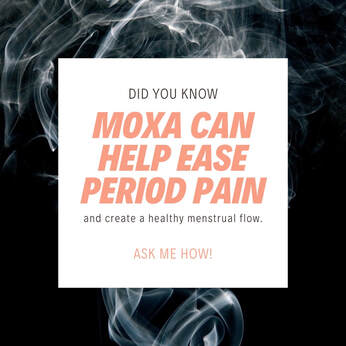 “A closed mind is like a closed book; just a block of wood” -Chinese Proverb A study conducted by Chengdu University of Traditional Chinese Medicine (TCM) has determined that the use of moxibustion at specific days during a woman’s menstrual cycle can decrease pain associated with menstruation. Dysmenorrhea or painful menstruation is a big problem for many women. This study used moxibustion, an accessory modality of TCM, to treat the pain associated with menstruation. The study and its systematic review showed moxibustion treatments were more effective at relieving pain only when the moxibustion began prior to the onset of actual menstruation. This is also the theory behind Traditional Chinese Medicine, that it should be used as preventive care. The efficacy of using moxibustion during the premenstrual time period holds great promise for those who are debilitated by dysmenorrhea. Dysmenorrhea, or painful menstruation, is experienced by more than half the menstruating women in the world. It is one of the most commonly encountered gynecologic disorders and for those suffering from severe dysmenorrhea, it can mean they are incapacitated for up to three days or more every month. The main cause of dysmenorrhea is increased or abnormal uterine prostanoid production and release, which then gives rise to abnormal uterine contractions and pain. The treatment of dysmenorrhea usually involves some sort of pain medication and rest, but there are alternatives. TCM is a medical system that incorporates numerous methods for treating disease and illness. One of the tools found in the toolbox of the Traditional Chinese Medicine practitioner is known as moxibustion. Moxibustion is a technique that involves the burning of mugwort, known as moxa, which is an herb that facilitates healing. The purpose of moxibustion is to stimulate the flow of blood and energy throughout the body. Moxibustion creates a pleasant heating sensation that penetrates deeply into the skin, but does not create a scar or any pain. To perform moxibustion, a practitioner lights one end of a stick of moxa and holds it close to the acupuncture point for several minutes until the area turns red. There are also adhesive cones of moxa that can be applied to the skin. These are then lit and allowed to burn until the fire reaches the base, which is when they are removed to prevent scars. Moxibustion is used to help people with cold or stagnant conditions. Burning moxa is believed to expel cold and warm the body, which creates a smooth flow of energy and blood. Moxibustion can be used to treat dysmenorrhea because it stimulates the flow and release of the hormones that cause uterine contractions. By stimulating the release of these hormones, the body can then expel them which leads to decreased pain. Moxibustion is also great for women who suffer from fibroids, which is a stagnation and buildup of blood in the uterus. The warmth from the burning mugwort actually increases blood flow and this can help decrease the size of the fibroids over time. As with acupuncture, only a licensed practitioner should be called upon for treatments such as moxibustion. If you believe moxibustion may be helpful with your dysmenorrhea, be sure to discuss this with me during your next scheduled appointment. 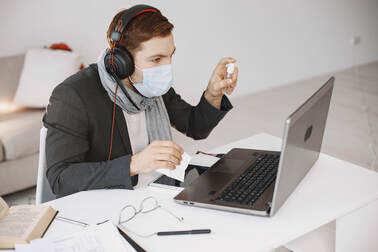 Telehealth is the use of technology to support long-distance health and clinical care. This has become a widely used practice in recent years, with the ASPE tallying 52.7 million telehealth visits in 2020, a huge boost compared to an approximate 840,000 visits in 2019. This shows how telehealth has become an invaluable innovation in the field of public health that could continue to develop over the next several decades. On another hand, we have acupuncture, a part of Traditional Chinese Medicine (TCM) that has already been around for the last 3000 years. Acupuncture is deeply personal, requiring a licensed acupuncturist to locate the meridians in your body where qi resides. With how telehealth has come to be a staple in healthcare, long-time enthusiasts who swear by the benefits of acupuncture have questioned whether harmony is possible between tradition and innovation. Let’s take a closer look at this below. Benefits of acupuncture Acupuncture is an ancient practice that bases itself on the idea of qi, the body’s vital energy. Using very thin needles, acupuncture can stimulate pressure points and meridians on your body to correct any imbalances of qi, which is oftentimes the cause of a variety of ailments and conditions that you may currently have. The practice can thus have a range of uses! Our previous write-up on Benefits of Acupuncture Care lists arthritis, chronic pain, depression, and weight loss among several other health conditions that acupuncture care can help with. Here, the very thin needles can stimulate the production of brain chemicals like endorphins that promote relaxation and boost mood while also reducing blood pressure and boosting immune system functions. Telehealth adoption Telehealth reached the heights of its popularity in recent years. However, the concept of delivering medical care using information technologies can actually date back to a century ago. Only the telegraph and the telephone accommodated communication then, and it wasn’t until 1958 that two-way video communication became a reality for telemedicine. Today, this seamless innovation is adopted across the globe. Wheel highlights how telemedicine software and services ease burnout for nurse practitioners in Minnesota and other states across the United States, as well as other healthcare staff shortages by allowing healthcare providers to offer flexible clinical services. These platforms can also adapt to patient needs and remove obstacles from the patient journey such as transportation and waiting times. This could become key for a number of senior patients who depend on acupuncture for their care. While acupuncturists can’t needle someone through a screen, practitioners of acupuncture therapy can rely on their wider arsenal of tools beyond needles to provide other holistic healing techniques. That’s because part of the underlying wisdom of TCM is its focus on self-care and health promotion. With telehealth, acupuncturists can impart dietary advice, lead people through breathing exercises or body awareness techniques, and offer herbal medicine. Some can also guide patients through self-applied acupressure treatments. A survey in NIH recounts how telehealth eased stress and pain, and provided immune support to patients who were simultaneously educated on nutrition- or herbal-based therapies. Future developments Research on acupressure continues to grow as its positive impacts on the treatment of chronic medical conditions develop. A study published in the Journal of the ASPMN looks into the development of an auricular point acupressure (APA) mobile app that patients used to guide themselves when learning and self-administering APA to manage their chronic low back pain. They were then provided the opportunity for questions and were able to verify the accuracy of the self-administered APA using telehealth. After four weeks, participants in the app and telehealth group experienced a 29% decrease in pain intensity during the post-intervention time point. This shows us the potential for acupuncture to remain relevant in the time of digitally-provided healthcare. Acupuncturists and acupuncture enthusiasts alike can look forward to how the century-long tradition can only evolve along with the times to offer more holistic and accessible care. Unfortunately, statistics show that men often have shorter life expectancies and poorer overall health when compared to women. The reasons for these poorer health outcomes may be a combination of genetic and social influences. Genetically, men are more prone to heart disease than women. In addition, social constructs around masculinity may contribute to the fact that men are much less likely than women to look after their health and see physicians.
According to the CDC the two most common causes of death for men are heart disease and cancer. June is a time to talk about these looming killers and encourage health screenings that can help promote longer lives for men, but it is also a time to consider quality of life. ‘Healthy aging’ is a buzz phrase often focused on women, but men also want to retain the energy and strength (and good looks!) of their youth once they've got the wisdom to go with it. One of the main threats to quality of life for aging men is testosterone decline. Testosterone is a hormone that maintains sex drive, sperm production, body hair, muscle and bone. While not as dramatic as women’s plunging hormones in menopause, all men go through a period of many years known as andropause, marked by a gradual decline in testosterone. Generally this plays out as about a 1% decrease a year after the age of 40. For many men, this is a normal transition that comes without noticeable symptoms. And many continue to have testosterone levels within normal ranges. But for some men, there are accompanying symptoms or further decline in levels that drop them below normal range. About 10-25% of men experience what has been called: “Aging Male Syndrome” and this can be a serious threat to their quality of life. The struggle can include weight gain, insomnia, decreased sex drive, erectile dysfunction, sweats and hot flashes, trouble concentrating, irritability, depression, increased urination, and bone, hair and muscle loss. The western approach to this problem, in addition to encouraging a healthy lifestyle and regular health screenings, offers drug therapy in the form of hormone replacement for men with severe symptoms. Testosterone therapy has shown some benefits for some, but for others, these benefits are not always clear. And the risks are concerning, as hormone therapy can stimulate the growth of metastatic prostate or breast cancer. It may also increase formation of clots and risk of heart attack or stroke. When Chinese Medicine talks about aging, the focus is on the kidneys. Kidney energy (qi) and essence governs the life cycles of human development. Testosterone, in general, is thought of as a manifestation of Kidney Yang (the hot, active aspect of kidney qi) As this declines, it is associated with low back pain, cold limbs, lower libido, paling complexion and weakness. The TCM approach is therefore to boost kidney yang. This is mainly done through acupuncture, moxibustion and herbs. One herb used to boost the kidney yang is called: yin yang huo, commonly known as horny goat weed. This and other individual herbs are known for strengthening kidney yang, but it is more likely that your practitioner will prescribe a multi-herb formula to address the issue from a few angles. Depending on the individual pattern, Jin Gui Shen Qi Wan is a formula that may be prescribed to supplement yang and warm the kidneys, while restoring balance in the system. Even without herbs, getting in for regular treatment proves very beneficial for men looking to maintain healthy testosterone levels. An eight week protocol of electro-acupuncture and moxibustion given to aging men at acupuncture points UB23 and DU 4 (known for tonifying the kidney yang energy), significantly increased total and free testosterone . The best part? This acupuncture-induced hormone boost comes without the unwanted side effects. Acupuncture, moxibustion and herbs are some of the best ‘healthy aging’ tools available for both men and women! Improve your quantity and quality of life by calling to schedule your next appointment!  Egg health Getting pregnant can be frustrating when it isn’t happening as easily as planned. There are many reasons you could be dealing with a difficult pregnancy including egg health. There are many factors that play into egg health including blood circulation, stress and hormonal balance. For improving blood and oxygen flow, try to get some sort of exercise whether it is yoga, running or simply going on a brisk walk at least three times a week. Ask a massage therapist about abdominal massage, which can increase blood flow to the reproductive system. Stress can also play a very important factor in egg health. Find ways to destress with meditation practices, acupuncture and deep breathing. Hormonal balance Hormonal imbalances in women are common and can result in weight gain, fatigue, skin problems, infertility and PMS. Hormones are an important part to our body’s growth and development, mood, reproduction and metabolism. To keep your body in balance, avoid high omega-6 polyunsaturated fats that are found in vegetable oils. Reduce your caffeine intake. Too much caffeine can have a negative impact on the endocrine system. Most importantly, make sure to get an adequate amount of sleep each night. When the body does not get enough rest, hormones cannot regulate. Breast health There are many reasons that some women have a higher risk of breast cancer including both genetics and environmental impacts. Research has shown that keeping a diet of fresh, unprocessed foods can help the health of breast tissue. Chemical exposure from foods as well as other environmental factors have been shown to be high in women who have breast cancer. Foods to eliminate from your diet include highly processed foods, additives, canned foods and soy. Avoiding foods that are high in hormones and adding foods that are packed with antioxidants such as berries can help lower your risk of breast cancer. Metabolism Many women feel their metabolism has slowed over the years, making it harder to break down and burn calories and fat. Try adding more omega-3 fatty acids into your diet such as salmon and tuna. Omega-3 fatty acids have been found to help regulate blood sugar and lower inflammation, which can then improve metabolic function. Increasing strength training can also help give the metabolism a boost. The more muscle you have, the more your resting metabolism will increase to burn fat. Lastly, eating breakfast has been shown to give your metabolism a jump start for the day compared to eating your first meal later in the day. Immune health Don’t let the cold and flu season get you down this year. There are many natural ways to boost your immune system to prevent illness and to improve energy levels. Assess your stress levels and take action if you are feeling stressed and overwhelmed. Spend some time practicing deep breathing or finding an activity that you find relaxing. Try adding in more garlic and ginger to your diet. These natural ingredients contain properties that help boost the immune system and lower cold and flu symptoms. http://natural-fertility-info.com/increase-egg-health http://wellnessmama.com/5946/natural-breast-health/ http://wellnessmama.com/5425/balance-hormones/ http://www.health.com/health/gallery/0,,20306911_7,00.html 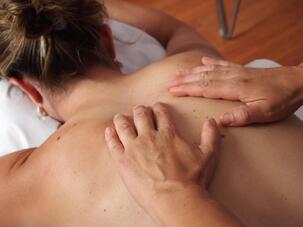 It is generally accepted that you should see your family physician at least once a year and your dentist at least twice a year. But not everybody knows about acupuncture and Traditional Chinese Medicine and the many benefits it can provide for you. If you start incorporating acupuncture into your health and wellness regime, you may not have to rely on the family physician so much for those minor little issues. Let’s look at how getting regular acupuncture treatments can help you stay happy and healthy. There are many ways acupuncture treatments can change a person’s life. One of the most noticeable is acupuncture can get you to look at your health from a completely different perspective. This could mean you might start taking a more in depth look at your health, which may allow you to veer away from some of the mainstream medical practices such as multiple pharmaceuticals. Many long-term acupuncture patients find they no longer need all the medications prescribed by their family physician, because the symptoms have been controlled using acupuncture. Acupuncture is great for prevention. Because regular acupuncture treatments can balance hormones and boost immunity, there is a good chance you won’t need that annual flu shot or all those over-the-counter cold medications. A trained acupuncturist can spot a problem like decreased immunity from a mile away. It can appear as symptoms such as chronic fatigue, insomnia and even body temperature fluctuations. A couple of treatments can make a big difference. What about relieving some of that extra stress we all deal with? Yes, regular acupuncture treatments can keep that at bay too. Many people don’t equate being poked with tiny needles as a relaxation technique, but it truly is relaxing. Many patients actually fall asleep after or while the needles are being placed. And the effects can last for days or even weeks. So the next time you feel irritable and overwhelmed, check out your local licensed acupuncturist. Regular acupuncture treatments can help you save money. What? It’s true. This goes back to the previous benefits. If you don’t need as many pharmaceuticals, you will ultimately save money. Also, conditions like stress, anxiety, fatigue and depression can keep you from going to work, possibly costing you several days of pay. But with regular acupuncture treatments, your moods can be more effectively managed and you won’t need to miss work as frequently. And the most popular reason to get regular acupuncture treatments is that it will help you remain pain free. We all have aches and pains. But research has shown acupuncture is more effective than opioids for controlling things like arthritic pain in the joints. It is also be incorporated into hospital emergency rooms throughout the United States, so people don’t need as many pain medications. As a matter of fact, in Asia, acupuncture is sometimes used by itself during and after surgical procedures to treat pain. While many of you may have a needle phobia, don’t let that deter you. Acupuncture is part of an amazing medical system that has been around for nearly 3,000 years. In comparison, Western medicine has only been around for about 200 to 250 years. That puts things in perspective a little, especially when you consider most people in Asian countries live longer, happier, healthier lives than almost everybody in the United States. There’s no better time than the present to start a good habit, and it's as easy as booking online at All Ways Well today! Your whole life just might change for the better. |
AuthorsRebecca M H Kitzerow is a Licensed Acupuncturist practicing in La Center, Washington. With over a decade of experience she has won 10 Nattie consumer choice awards from Natural Awakenings Magazine since 2014. Archives
January 2024
Categories
All
|
Photos from Hey Paul Studios, BeGreen_Studio, Pawel Pacholec, 1950sUnlimited, toulupaliaqaz, Joelk75, OnTask, Robert Gourley, cnu_sports, Mitya Ku, wuestenigel (CC BY 2.0), FootMassagez, 401(K) 2013, Mariana Heinz, @EdwardTerry, fishhawk, liverpoolhls, torbakhopper, Boemski, dolomitibl, Driscolltheque, Dave n Laura, Vaping360, MVWorks, Life Mental Health, MVWorks, mikefats, Scot Nelson, jfl1066, wZa HK, ruurmo, Guadalupe Cervilla, Army Medicine, GViciano, torbakhopper, adrigu, Saulo Cruz, Ben Cumming, marniejoyce, kcxd, JasonCorey, kanenas.net, Live to Create Photography, gm.esthermax, Unique Hotels Group, Zenspa1, mysiana, Tobias Lindman, Leader Nancy Pelosi, Kristoffer Trolle, swanksalot, Bill Selak, Parker Knight, stimpsonjake, Gedankensprudler, SuperFantastic, tonynetone, marniejoyce, JeepersMedia, Illusive Photography, 'Ajnagraphy', Iban Torras, scotted400, gtall1, dvanzuijlekom, BPPrice, Skley, torbakhopper, Renato Ganoza, anka.albrecht, QUOI Media, Public Domain Photos, Instant Vantage, Victor Tongdee, Free Grunge Textures - www.freestock.ca, sportEX journals, Nadja Tatar, angela n., marniejoyce, MVWorks, Karolina Kabat, Thomas Fisher Rare Book Library, UofT, ginnerobot, tracilawson, haven't the slightest, My Photo Journeys, Pierre Willemin, Florena_Presse, SuperFantastic, colindunn, zzkt, TraumaAndDissociation, ER24 EMS (Pty) Ltd., shixart1985 (CC BY 2.0), marniejoyce, Tomás Fano, freestock.ca ♡ dare to share beauty, Archives New Zealand, Jaykhuang, airdrie.m, Go-tea 郭天, OnTask, wuestenigel, focusonmore.com, Disney | ABC Television Group, Andrew Gustar, Didriks, ConstructionDealMkting, charlywkarl, barnimages.com, Lel4nd, runwaypilates, michaelstephanfotografie, McLevn, TraumaAndDissociation, eLife - the journal, Lars Plougmann, wuestenigel, shixart1985, boviate, davis.steve32, kevin dooley, @the.photoguy (insta), frederic.gombert, Feathering the Nest, Victor Tondee, shixart1985, wuestenigel, Joe K Gage, kennethkonica

 RSS Feed
RSS Feed
